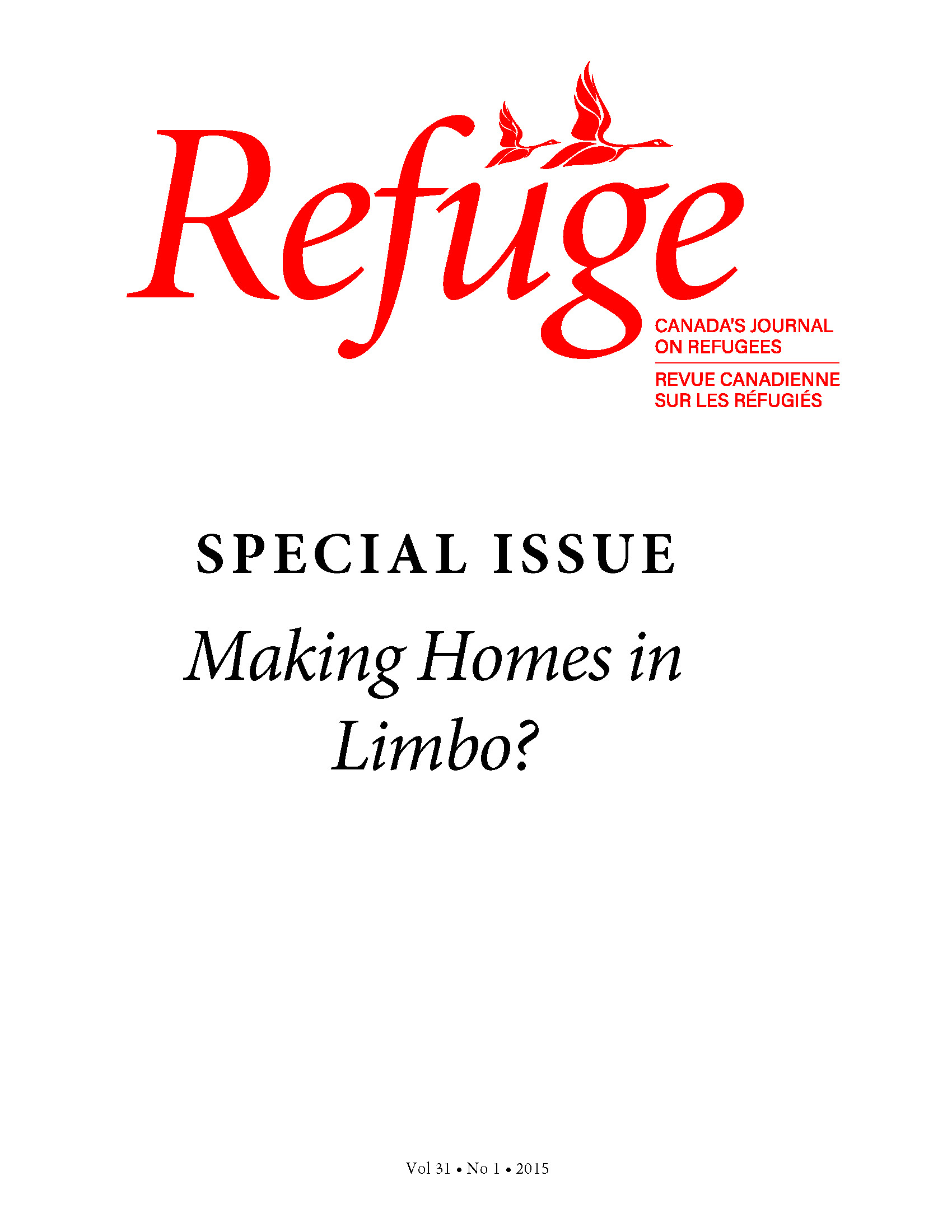Home as a Critical Value: From Shelter to Home in Georgia
DOI:
https://doi.org/10.25071/1920-7336.40141Keywords:
Kutaisi, Georgia, Abkhazian refugees, home, homemaking, internal displacement, protracted displacementAbstract
Providing shelter and housing is a core area of humanitarian assistance for displaced populations. Georgia, a former Soviet republic in the South Caucasus, has experienced displacement since the early 1990s, and housing has proved to be politically contentious and a major concern during the 20-year displacement crisis. In Georgia, as elsewhere, homemaking takes place during displacement in dwellings that are temporary and not supposed to last. The article explores the conditions that enable such homemaking and discusses what Iris Marion Young terms “home as a critical value.” One trial project is used as an example: the building of 42 small houses, termed “block houses,” in Kutaisi, Western Georgia, by the Norwegian Refugee Council in 2002 and 2003. The article explores the relationships and homemaking practices in and around the houses that people have developed since that date. Relative to others, the project has been a positive example of how to enable home as a critical value. The article first defines house-as-home and introduces the case explored; it then discusses internal displacement and “durable housing solutions” in Georgia, before turning to explore how shelter, housing, home, and homemaking can be conceptualized in displacement . By engaging with Iris Marion Young’s “home as a critical value,” the article analyzes how people have adjusted to and adapted the block houses in Kutaisi to understand the relationship between the houses and the homemaking that takes place within and around them. The concluding section discusses how home as a critical value may help to show the importance of identity and social status for housing strategies in protracted displacement.
Metrics
Downloads
Published
How to Cite
Issue
Section
License
Copyright (c) 2015 Cathrine Brun

This work is licensed under a Creative Commons Attribution-NonCommercial 4.0 International License.
Refuge authors retain the copyright over their work, and license it to the general public under the Creative Commons Attribution-Non Commercial License International (CC BY-NC 4.0). This license allows for non-commercial use, reproduction and adaption of the material in any medium or format, with proper attribution. For general information on Creative Commons licences, visit the Creative Commons site. For the CC BY-NC 4.0 license, review the human readable summary.







